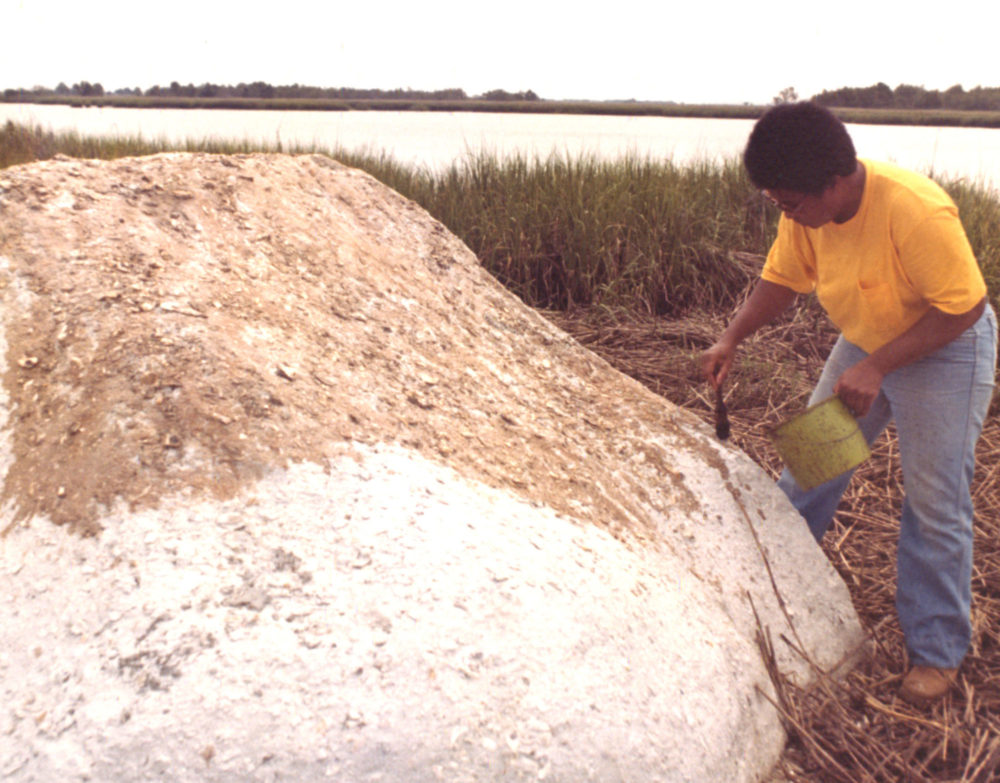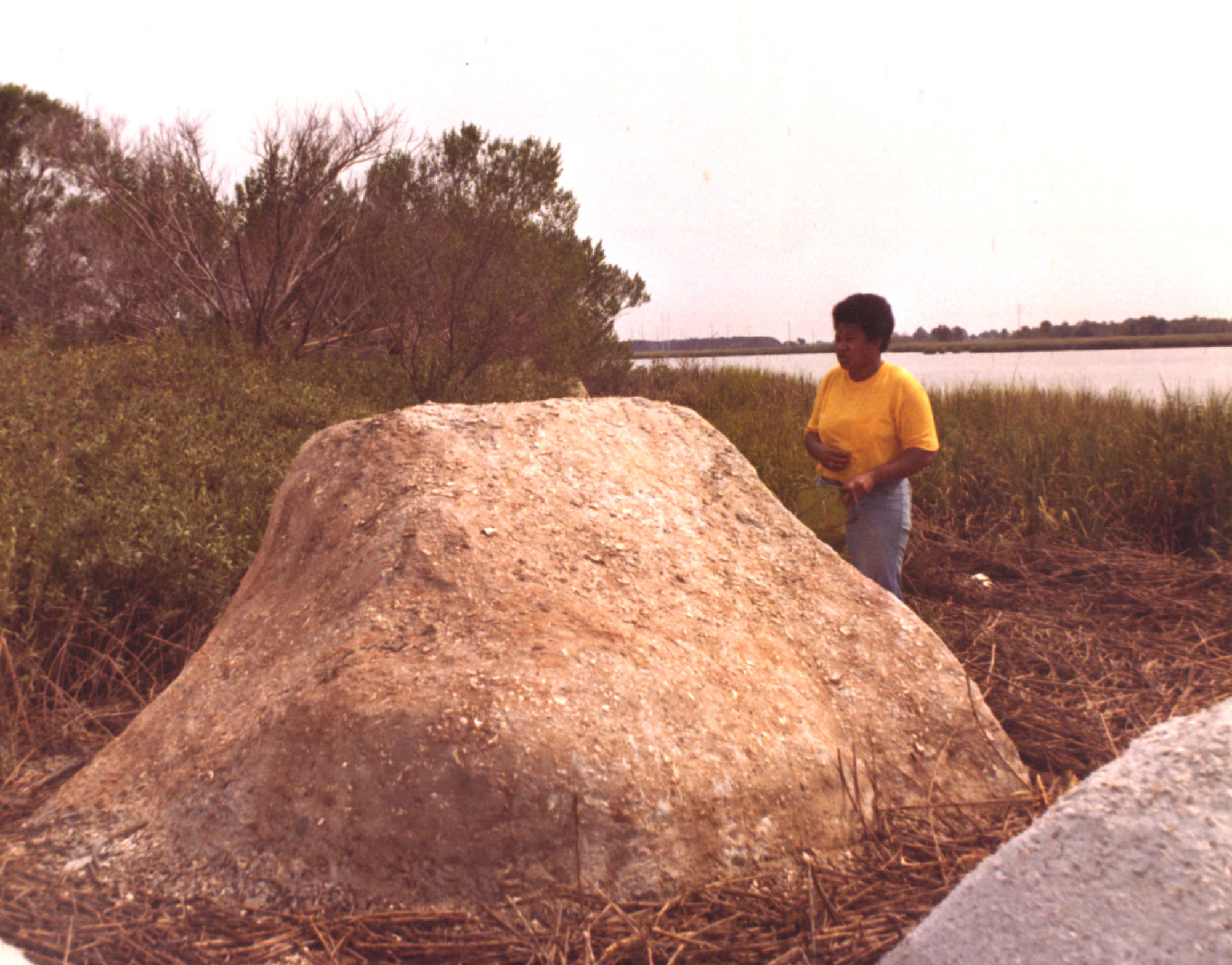It’s hard to find Beverly Buchanan’s Marsh Ruins, not because it is situated in a far-flung, isolated location like most land artworks by famous artists. Rather, its position, just off a local highway, in an innocuous, relatively unspectacular landscape, with no signage, means that it is very easy to miss. This, along with the fact that it is submerged by water twice a day, contributes to the sense that it is a roadside attraction that fails to attract.

Situated on the edge of a tidal salt marsh, in the state of Georgia, in the southeast of the US, the work looks out to the Atlantic Ocean. It is made up of three sculptural mounds, arranged in a triangular formation, that merge into the landscape. They look like boulders, created by nature with very little fuss and no fanfare.

Buchanan’s formative educational years were a million miles from the arts. Having gained degrees in medical technology, parasitology, and public health, she went on to work at a hospital for veterans, in the Bronx, and then as a public health educator in New Jersey. Intending to acquire yet another degree, this time in medicine, Buchanan abruptly switched gears and decided to become an artist in 1977, when she was in her late twenties. She enrolled in the Art Student League and became known for her exploration of Southern vernacular architecture and the relationship between Black people, history and the landscape. Today, she is primarily known for her paintings and sculptures that reference ‘the shack’, a simple, makeshift dwelling initially inhabited by slaves and subsequently by rural, southern African Americans. Academic Janet T. Marquardt argues that Buchanan treats shacks not as documentary elements but as ‘images of endurance and personal history’.1 They are both joyful, particularly the early brightly coloured sculptures, and melancholic. Potent themes of identity, place and collective memory are underscored with an insistent reckoning with the history of slavery.
Alongside her small-scale sculptural and painting practice, Buchanan made large-scale sculptural works for the landscape. Her expressed aim was to acknowledge important places in African American history that have been forgotten – quietly intervening in the landscape and memorialising sites of racial disparity or violence. Marsh Ruins is part of this practice.

Created over two days by the artist and a local contractor, the project was made financially viable with support in the form of a Guggenheim Fellowship.
Marsh Ruins symbolically bears witness to the mass suicide, in 1803, of a group of Igbo people who chose death over a life of enslavement and defiantly waded into the coastal waters of nearby St Simons Island and drowned. One of the largest mass suicides of enslaved West Africans in the history of chattel slavery, it is said that this group of seventy-five people walked together into the creek singing in the Igbo language The Water Spirit brought us, the Water Spirit will take us home.
Mounds of concrete are covered in a protective layer of ‘tabby’, a mixture of lime, sand, oyster shells, water and ash traditionally used by African Americans throughout the American South to construct shelters and grave stones. Acknowledging the vulnerability that is intrinsic to the earth, nature, and our bodies, these mounds were always intended to be lost to erosion. Buchanan was interested in the continual process of ruination – of culture, landscape, traditions and things – that harnessed the transformative powers of destruction. She embraced the idea that her mounds would live on in other forms, morphed by the ebb and flow of time, the tide, and human history. Unlike most memorials that speak of conviction, longevity, permanence (lest we forget), Marsh Ruins is an ode to ephemerality, vulnerability, and ghostly, immaterial, love.
It gets more complicated though, because Buchanan’s interest in entropy – or things falling to pieces – is mirrored in the active contempt of much of the art world for the work of Black women, and the racism embedded within the structures of the Western canon. Marsh Ruins is ‘decrepit, forgotten, overgrown and broken’ not only because it has been destroyed by elemental forces and the movement of time, but also the wilful amnesia of white America.2
